Table of Contents
Introduction
Subsistence agriculture is among the oldest and most primitive types of farming in the world, with humans worldwide engaging in it for thousands of years.
In simple terms, it is a form of farming where farmers grow crops and raise animals primarily to feed their families, with little or no excess that can be sold. Unlike today’s commercial farming for profit, primitive subsistence farming is survival, food security, and self-sufficiency.
To fully appreciate its place in society, one needs to explore the connection among primitive subsistence farming, primitive subsistence agriculture, and the final primitive subsistence meaning.
It is a widespread practice in regions with minimal technological advancement, less resource availability for higher-end equipment, and significant dependence on old-fashioned know-how. The producers primarily employ rudimentary implements such as wooden plows, hand tools, and natural irrigation.
The crops are typically rain-fed and cultivated in tiny tracts of land, and the procedure is extremely vulnerable to environmental factors such as land fertility, rainfalls, and climatic conditions.
For this reason, primitive subsistence farming is generally claimed to be vulnerable but securely rooted in ecological balance.
The subsistence meaning in its original form also goes a little further than just cultivating—it is maintaining cultural habits, coexisting with nature, and ensuring that families remain autonomous even in far-flung places.
In fact, many of the tribal people in Asia, Africa, and South America continue to practice such habits, which says a lot about its relevance even in today’s mechanized age of cultivation.
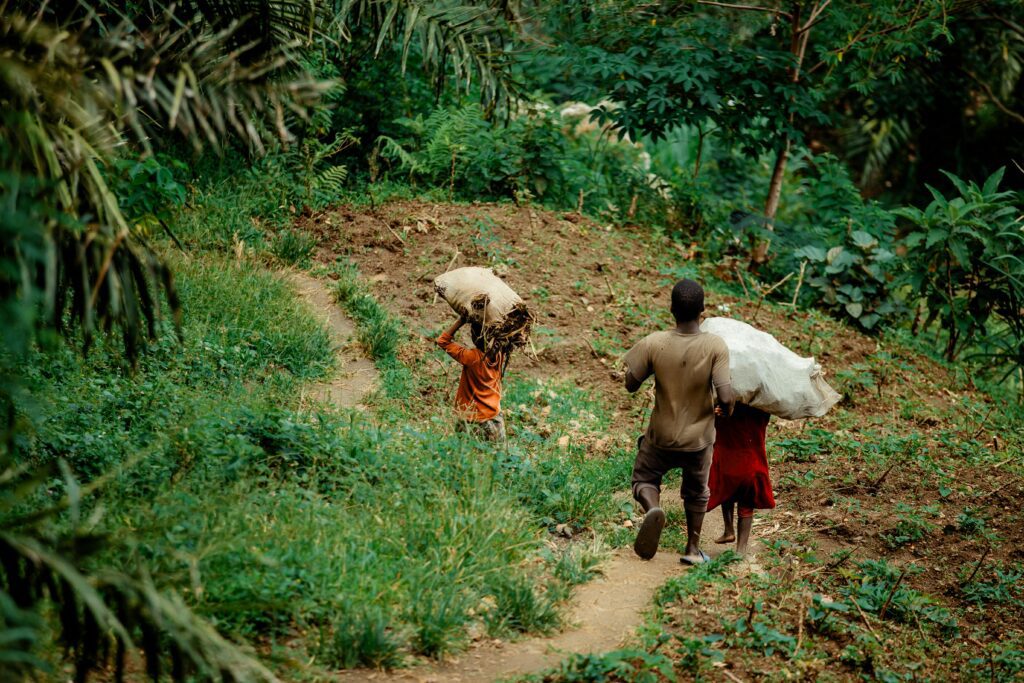
This introduction attempts to set the stage in exploring the five perceptive observations into primitive subsistence farming, like its benefits, practices, challenges, and remedies in the future.
Through this exploration, we can marvel at how this traditional practice still impinges on rural livelihood and what it has to teach us about sustainable agriculture.
Benefits of Primitive Subsistence Farming
Subsistence farming appears primitive compared to current farm systems, but it still has a lot to provide rural societies globally. Subsistence farming is not just a form of production of food; it is a life with ecological, cultural, and economic importance.
To have a clear idea about the primitive subsistence meaning, one must explore the specific benefits this farming system delivers for small-scale farmers and indigenous societies who live it.
Takes Families to Food Security
The greatest benefit of primitive subsistence agriculture is food security. Since the matured crops and animals are primarily for household consumption, families can be certain of meeting their basic food needs throughout the year.
Unlike commercial farmers who must depend on markets and fluctuating prices, subsistence farm families grow staple foods such as rice, wheat, maize, and millet specifically for them to consume. This reduces dependence on external sources and provides security when most required.
The activity also allows farm households to grow an assortment of crops based on climate and soil, such that they never lack food, even during unfavorable conditions.
Saves Traditional Skills and Knowledge
Primitive subsistence agriculture is an ever-living treasury of cultural heritage, local knowledge, and farming practices passed from generation to generation. The practices utilized are closely related to the local ecology, climatic patterns, and natural resources.
Techniques such as shifting cultivation, terrace farming, and mixed cropping, for example, are practices that convey the definition of primitive subsistence and signify the way in which the farmers have learned through generations.
Through utilizing these techniques, rural villages preserve not just agriculture knowledge but also festivals, rituals, and social networks based on the cultivation cycle.
Promotes Eco-Friendly and Sustainable Farming Practices
Another major advantage is its eco-friendliness. It is grounded on natural resources like organic manure, cow dung, compost, and local seeds rather than chemical fertilizers or pesticides. It reduces soil erosion, prevents water pollution, and promotes ecological balance.
Farmers also engage in crop rotation and mixed cropping, which improve soil fertility and reduce pest attacks organically.
In the modern age when sustainability is a major concern, primitive subsistence farming techniques can be valuable lessons to facilitate environmentally sustainable agri-food systems harmonious with nature.
Low Input and Low-Cost Farming
Primitive subsistence farming is low in inputs, hence low cost for small farmers. Most of the tools are self-made or locally available, seeds are reused from the previous harvest, and manures are organic and homemade.
This reduces dependency on expensive machinery, fuel, or chemicals, which would otherwise burden farmers who practice commercial farming. Where few financial resources are available, a low-cost system of farming enables households to remain self-sufficient without accumulating debts.
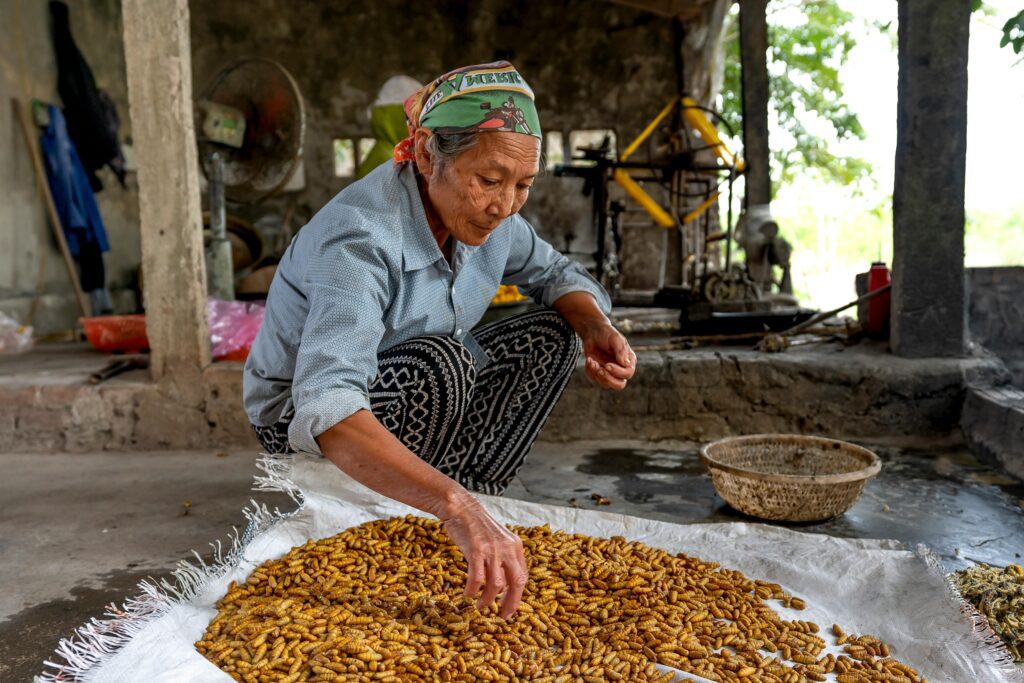
This highlights the survival dimension of primitive subsistence meaning, where affordability is coupled with survival.
Fosters Community and Social Relations
Primitive subsistence farming also fosters community harmony. Since the majority of families within rural societies have similar farm cycles, activities such as planting, harvesting, and irrigation would typically demand communal effort.
This strengthens social bonds, creates webs of support, and promotes knowledge exchange within the community. Farming in the majority of tribal regions is not just about crops—it’s about shared living, harvest festivals, and cultural solidarity.
Through interlinking of households through shared practices, primitive subsistence farming serves to create rural societies’ social stability.
Methods of Primitive Subsistence Farming
Primitive subsistence farming is not a homogeneous activity—it varies by geography, culture, and resources available. The subsistence connotation of primitive is more meaningful when we examine the idiosyncratic methods utilized by farmers across different areas.
Over the centuries, these techniques have evolved and been perfected based on need as well as nature. Unlike contemporary farming that is machinery- and chemical-dependent, primitive subsistence farming survives under traditional practices, native information, and available natural equipment.
The following are some of the most prevalent techniques used in this subsistence system of agriculture.
Shifting Cultivation
Shifting agriculture or “slash and burn” farming is one of the oldest methods connected with primitive subsistence farming. Trees and bushes on a plot of land are cut by farmers and then burned in order to use ash as a fertilizer for the soil.
Millet, maize, and cassava are planted for several years until the land remains fallow and naturally renews itself as the soil becomes barren. Farmers move to a new plot of land and repeat.
While this technique provides instant fertility and requires minimal equipment, it is very forest-reliant and only possible on small scales as an exercise in sustainability.
Shifting cultivation strongly reflects the primitive subsistence meaning with life revolving around interacting with natural cycles rather than using contemporary fertilizers.
Terrace Farming
In hilly and mountainous regions, terrace farming is one of the main methods of primitive subsistence agriculture. Terraces or steps are cut out by farmers in the slopes so that water can be retained to irrigate crops and so that soil erosion can be prevented.
This activity is normally practiced in India’s and Nepal’s Himalaya and in certain regions of Southeast Asia, where rice is grown in terraced fields. Terrace farming allows for maximum utilization of land in areas lacking plain lands.
It also demonstrates the way in which primitive subsistence farming makes concessions to geography, making it possible for communities settled in challenging terrains to produce sufficient food to sustain themselves.
The practice exemplifies resilience and creativity, both qualities that are at the heart of the primitive subsistence meaning.
Mixed Cropping
Mixed cropping refers to the practice of planting two or more crops on a single plot of land at the same time. The method guarantees that even if one crop does not do well due to pests, drought, or disease, there are other crops that will provide food security.
For example, maize, beans, and pumpkins can be planted at the same time, where the crops replace each other in nutrients and space. Mixed farming reduces risk, maintains soil fertility, and enhances biodiversity, thus being among the most sustainable primitive subsistence farming practices.
The approach clearly shows how primitive subsistence farming prioritizes survival as opposed to profit-making and ensures that households have a range of food sources at all times.
Use of Plain Tools and Labor Force
One feature of primitive subsistence agriculture is the intensive reliance on simple tools and manual labor. Agriculturalists use wooden plows, hand hoes, sickles, and digging sticks to prepare the ground, sow seeds, and harvest.
Because most families cannot afford tractors or advanced machines, human energy becomes the primary motive force for agricultural work. The system takes much effort but little cost and is therefore suitable for poor families.
Use of crude tools bolsters the primitive subsistence sense—it is not efficiency or speed, but doing enough with available resources to meet the low requirements of the family.
Depending on Nature’s Variables
Perhaps the most important way of primitive subsistence farming is relying on nature’s variables such as rainfall, soil quality, and weather. The farmers never use artificial irrigation techniques or chemical fertilizers but are dependent on monsoons, rivers, and natural manure to nourish their crops.
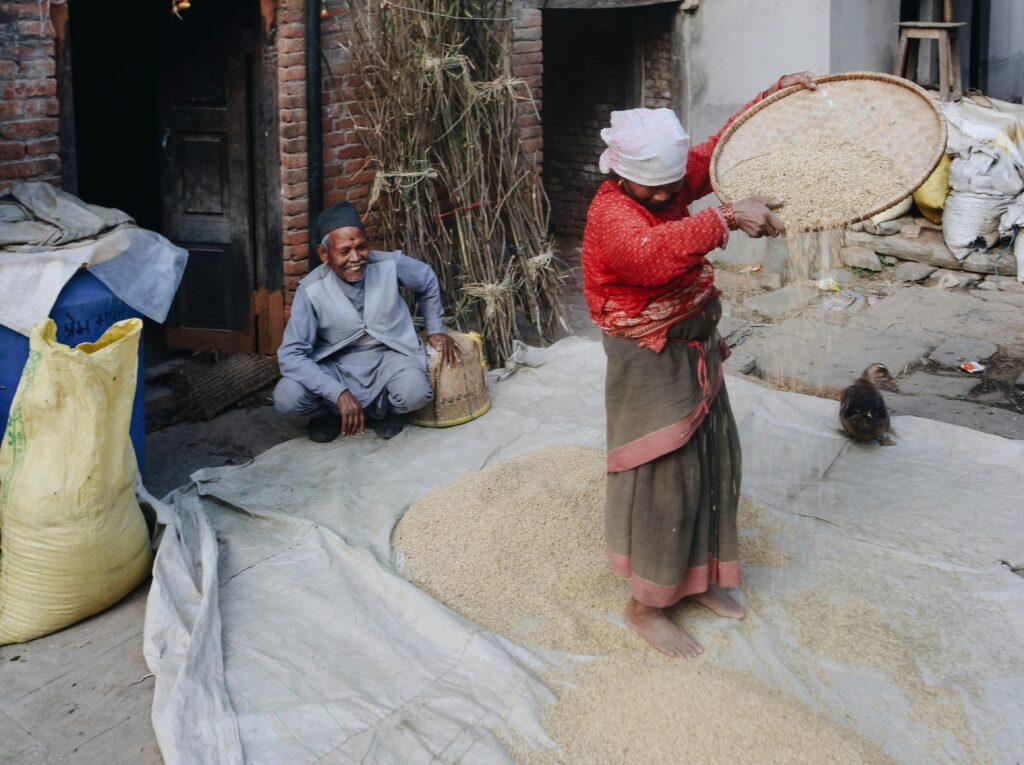
This makes farming volatile but deeply in tune with nature’s cycles. Planting and harvesting times are decided by seasonal cycles so that farm operations are kept synchronized with nature. This dependence is reflective of the characteristics of primitive subsistence farming, where survival is driven by nature itself.
Issues of Primitive Subsistence Farming
Though primitive subsistence farming provides food security and preserves culture, there are numerous issues in the modern era. Farmers from this type of farming typically face limitations that render survival uncertain and production low.
The primitive subsistence implication becomes evident if we take into account such issues—since it refers to the way that this type of agriculture is heavily dependent on natural factors, old methods, and limited resources.
These issues not only affect farming households but also rural communities with high reliance on primitive subsistence farming.
Small Holdings and Fragmentation
One of the biggest issues of primitive subsistence farming is the issue of small and fragmented landholdings. Most families own a piece of land, which in most cases is shared among numerous generations.
With each division, the land becomes too small to provide enough food for the entire family. This makes farming less productive and subjects families to food shortages.
It is usually difficult for farmers practicing primitive subsistence farming to expand their farms since they have no resources and are facing more pressure from population.
Land scarcity constrains the diversification of crops and lowers the possibility of surplus production, locking farmers in a subsistence trap.
Dependence on Rainfall and Climate
Primitive subsistence farming depends largely on forces of nature, particularly climate and rainfall. Since irrigation practices are not used frequently, farmers mostly rely on seasonal rains to farm. In the event of unpredictable rainfall or serial droughts in certain areas, households become severely food insecure.
Too much rain, however, leads to flooding as well as the loss of crops. This excessive dependence on weather caprices makes early subsistence farming extremely uncertain and hazardous.
The subsistence definition in its original meaning is deeply rooted to this problem—it speaks of how the farmers live at the mercy of nature and lack any authority over the fruits of their cultivation.
Low Productivity and Outdated Implements
Manual work and outdated farming equipment are another major concern. While these implements are low-priced, they severely limit productivity. The plants take more time to grow, and yields are low in contrast to mechanized modern farming.
Subsistence farming in primitive regions also lacks proper storage space, leading to wastage at harvest time.
As productivity is low, only the families are surviving and not able to produce any excess, thereby indicating how primitive subsistence farming is struggling where labor is the deciding factor for survival but has no scope for expansion or improvement.
Soil Degradation and Environmental Pressure
Shifting cultivation and multiple land use without scientific management are likely to lead to soil degradation. When population pressure increases, the fallow years under shifting cultivation are reduced, leaving the land with not enough time to recover its fertility.
The land gradually loses fertility over years, and farmers are forced to fell more new tracts of land, thus causing deforestation. This ecological problem is a critical threat to primal subsistence agriculture and to environmental harmony.
The pristine subsistence connotation of living in a harmonious relationship with nature is undermined when traditional practices are compelled to adapt to rising population pressures.
Inadequate Access to Markets and Capital Support
Despite the focus by primitive subsistence agriculture on consumption at the household level, most farmers do occasionally try selling marginal surplus in the local markets.
In spite of this, lack of proper infrastructure, inadequate communications, and limited financial support make it virtually impossible for them to benefit from the market economy. Banks and other financial institutions never provide loans to subsistence farmers because of their low repayment capability.
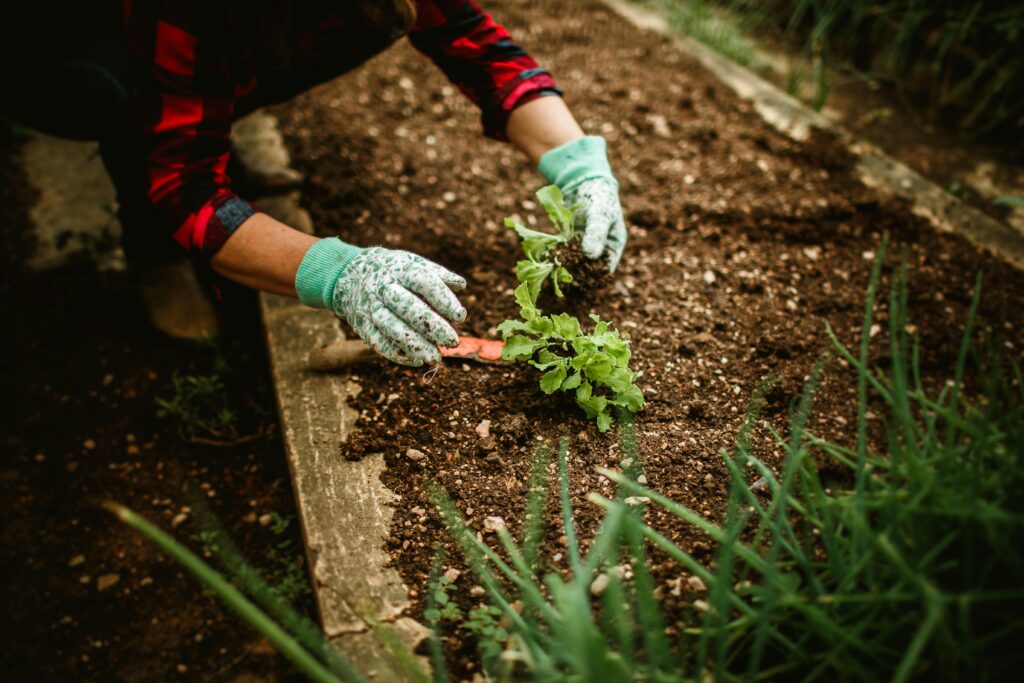
Without technology or credit, farmers are stuck with traditional methods, unable to modernize or raise productivity. This lack of support ensnares individuals in a cycle of poverty from which it is hard to escape.
Solutions to Improve Primitive Subsistence Farming
While primitive subsistence farming is full of numerous challenges, there are also pragmatic solutions which can make this system more productive, sustainable, and secure.
The definition of primitive subsistence is not how to substitute tradition with technology, but instead a balance between ageless know-how and new innovations.
Through the empowerment of farmers with education, inputs, and policy support, primitive subsistence agriculture can be further built without lowering its ecological and cultural significance.
Some of the solutions that can significantly improve the lives of households practicing this form of farming are as follows.
Introduction of Low-Cost Technology
One viable solution is the introduction of low-cost and locally adoptable technology. Instead of promoting big machinery and expensive equipment, farmers can be provided with simple implements such as improved hand plows, efficient irrigation pumps, and low-cost storage gadgets.
These methods can conserve time, increase productivity, and reduce crop losses without falling outside the model of primitive subsistence farming. Through the introduction of technology into tradition, farmers can increase production without losing the self-sufficiency of primitive subsistence agriculture.
Encouraging Rainwater Harvesting and Irrigation
Since dependence on rain is among the biggest dangers in primitive subsistence farming, better water management techniques can go a long way. Easy methods such as rainwater harvesting, check dams, and small-scale irrigation canals can enable farmers to grow crops even during the season of drought.
These methods are cost-effective and can be sustained by the community in a manner that water will always be present. With proper irrigation, subsistence farming using primitive means becomes more guaranteed and less vulnerable to weather changes, and this improves rural family food security.
Soil Management and Organic Practices
Maintaining primitive subsistence farming necessitates soil fertility. Farmers can learn organic methods such as composting, mulching, and green manuring in order to restore the nutrients naturally. Crop-tree growing can halt erosion and provide supplementary food and income sources.
All these measures conform to the primitive subsistence meaning in the sense that they focus on working together with nature instead of fighting it. Through their attempts to improve soil health, farmers can increase productivity without making agriculture more unsustainable and less environmentally friendly.
Access to Credit and Government Support
Access to credit and government support are key in making primitive subsistence agriculture more robust. Governments and non-governmental agencies (NGOs) can set up microfinance schemes, subsidize seeds and fertilizers, and introduce insurance schemes to protect farmers from crop failure.
Access to basic credit allows farmers to invest in better tools, diversify crops, and manage risks better. Institutional credit can be provided to rural families, making subsistence farming become more secure without compromising its focus on family consumption and autonomy.
Community Education and Training
Knowledge transmission is another powerful answer. Through training sessions, learning sessions, and workshops at the community level, farmers can adopt improved methods of cultivation, pest control, and water harvesting.
Education fills the gap between ancient subsistence meaning and modern agricultural knowledge so that farmers take informed decisions. If individuals acquire knowledge collectively as a community, they not only increase the effectiveness of agriculture but also increase social solidarity.
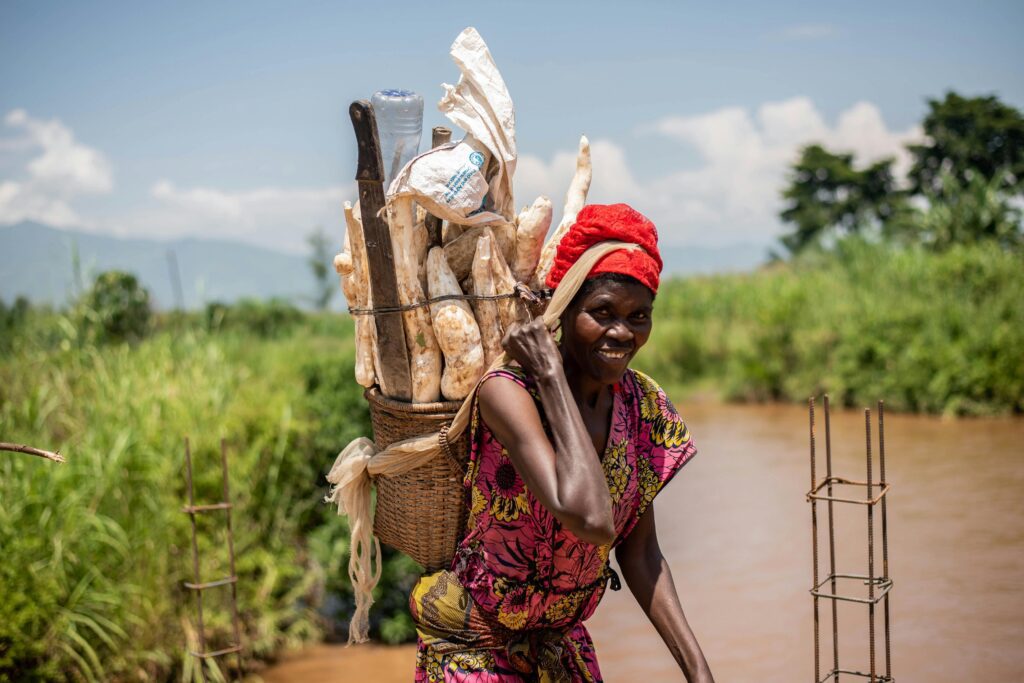
Education provides the younger generation of farmers the ability to preserve cultural heritage and infuse sustainable innovations.
FAQs on Primitive Subsistence Farming
1. What is primitive subsistence farming and how is it different from contemporary farming?
Primitive subsistence farming is a very ancient technique of agriculture in which farmers grow crops and raise animals for the consumption of their family and little else. It is commonly grown on small plots of land using basic equipment like wooden plows, hand hoes, and sickles.
Agriculturalists depend on natural factors such as rain, soil fertility, and seasonal climatic variations. In contrast, contemporary farming emphasizes commercial harvests, uses high-tech equipment, chemical fertilizers, and irrigation conduits for utmost returns and income.
Primitive subsistence farming concentrates on survival and self-sufficiency, whereas modern farming aims for mass production and generating profit. The definition of primitive subsistence highlights its tradition-oriented character as a survival mechanism, thereby being significantly different from profit farming.
2. What crops are grown in primitive subsistence farming?
The crops to be grown in primitive subsistence farming depend on local weather, soil, and family needs. Agriculturalists usually sow staple crops such as rice, wheat, maize, millet, barley, and pulses as they form the major food of their households.
Root crops such as cassava, yams, and sweet potatoes are common in hill and tribal regions. Some groups also sow oilseeds, vegetables, and fruits in small quantities to augment their diet.
In contrast to commercial farming, in which crops are planted for market purposes, primitive subsistence farming is done to ensure food security for households. Farmers can also engage in mixed cropping, planting several crops simultaneously on the same plot to avoid risks of crop loss.
The primitive subsistence definition in this case is concerned with making sure that a family will have sufficient food for the whole year more than anything else.
3. Where is primitive subsistence farming widely practiced?
Subsistence farming is only common in developing countries, especially where there is limited technology, infrastructure, and capital. In India, it’s common in states like Assam, Meghalaya, Mizoram, and Nagaland, where jhum cultivation or shifting cultivation occurs.
In Africa, Nigeria, Ethiopia, and Kenya are nations where subsistence cultivation occurs. In Latin America, parts of Brazil, Peru, and Bolivia also use this practice. It happens most often in hilly tracts, tribal regions, and forests where there is no easy access for modern farm machinery.
Primitive subsistence meaning is geographically rooted deeply—it thrives where locals depend heavily upon indigenous knowledge and native methods.
Unlike commercial farming which extends right around the globe, primitive subsistence farming remains localized and attuned to the immediate requirements of families.
4. What are the serious challenges of primitive subsistence agriculture?
Primitive subsistence agriculture faces several challenges that render it difficult for families relying on it to survive. Small and fragmented holdings limit production, and dependence on rainfall makes agriculture perilous.
Manpower and traditional implements limit yields, and lack of adequate storage guarantees post-harvest losses. Deposition of soil fertility because of year-round cultivation or shifting cultivation reduces fertility further with every passing year.
Farmers also have poor access to credit, markets, and government support, which prevents them from improving their practices. All these are reasons why primitive subsistence farming remains threatened in today’s fast-changing world.
The definition of primitive subsistence emphasizes survival, but the reality of climate change, mounting population pressure, and lack of resources has a tendency to complicate the survival method even further.
5. Can primitive subsistence farming be improved without giving up tradition?
Yes, primitive subsistence agriculture can be improved without losing the cultural heritage and balance with nature. The key is to combine the old ways of doing things with modern solutions.
For example, farmers can apply organic fertilizers, carry out rainwater harvesting, and learn soil management techniques without disposing of their older crop cycles. Low-cost equipment and training courses could increase productivity but keep it affordable.
Microfinance, government programs, and grassroots support are also possible means to achieve necessary financial stability. The subsistence connotation of primitive farming is survival and coexistence with nature, and these can be kept intact even while making the system more efficient in the long run.
There’s no reason that ancient subsistence farming must be mired in tradition—when supported adequately, it can be an enduring system that respects tradition as well as progress.
Conclusion
Subsistence farming in its original form is not only an ancient way of cultivating crops—it is a survival strategy, a cultural tradition, and a lesson in sustainability. It shows us that even with scarce resources, families are able to be self-sufficient through dependency on nature, traditional wisdom, and cooperation.
Subsistence meaning primitive shows how this practice serves to provide food security and balance within the ecosystem compared to profit.
The benefits of primitive subsistence farming—food security, preservation of traditions, and environmentally sustainable practices—are still relevant even today.
But its detriments—small sizes of the holding, low productivity, degradation of the land, and overdependence on rainfall—explain why it is not without bounds.
To counter these, solutions in the forms of low-technology enhancement, rainwater collection, soil protection, financial support, and farm education need to be introduced into the system.
Since the world is going through climate change and sustainability challenges, there is something that can be learned from the old subsistence agriculture. Instead of discarding it as primitive, governments, scientists, and individuals should work together and improve it while still keeping its essence.
From this, we can honor traditions, empower rural households, and ensure this ancient system of farming continues to provide security and knowledge for decades to come.
